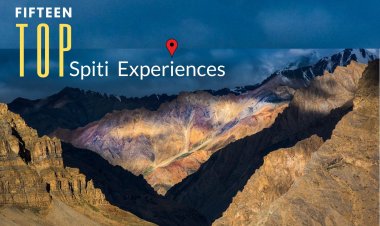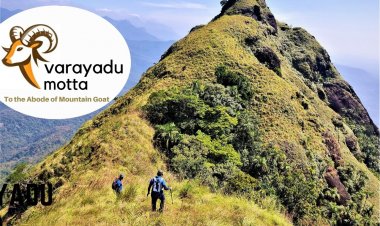12 best places to spot tigers face to face in India
Sighting a elusive cat in the wilderness has been a dream of every nature lover and photograph them in action.Spotting the endangered species is not so easy or a thoroughfare. The reserve forests and national parks across india with the help of expert naturalists, organise safaris for those who embark to National parks, which is a seasonal affair. The 12 iconic National parks across country earmarked for sighting the striped cat will help you to realise your long time dream !
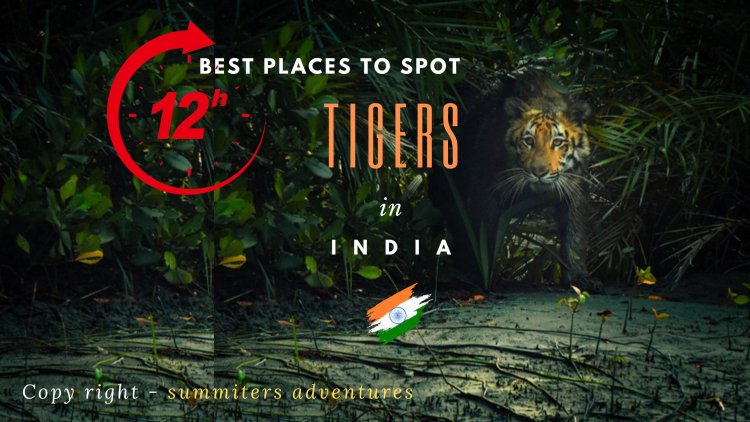
It is all time dream of a wildlife enthusiast to sight a striped cat in the wild environs, during safaris in the National parks or in wilderness reserves. Few chase their dreams and after multiple visits, they realise how much blessed they are !. Finally after sighting the elusive cat.
Few casually, being dejected say - NO LUCK ! NO TIGERS AT ALL
Among asian countries, India has a thriving population and contribute for 80 Percent of tiger population across the world.
The rich forests are home for striped cats and are declared as protected species. India is home for 55 Tiger reserves / National parks. The elusive mammal here can be sighted in the natural habitat under expert guidance of experienced naturalists escorting you during wildlife tour.
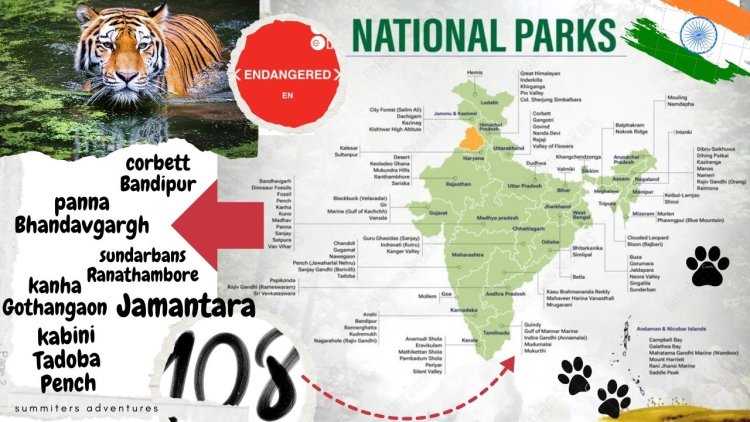
Here we discuss about the best sighting reserves, where tiger can be spotted under expert guidance.
Finally what matters is the SEASON I PATIENCE I TRACKING I OBSERVATION I SPOTTING
1. Kabini National Park / State - Karnataka
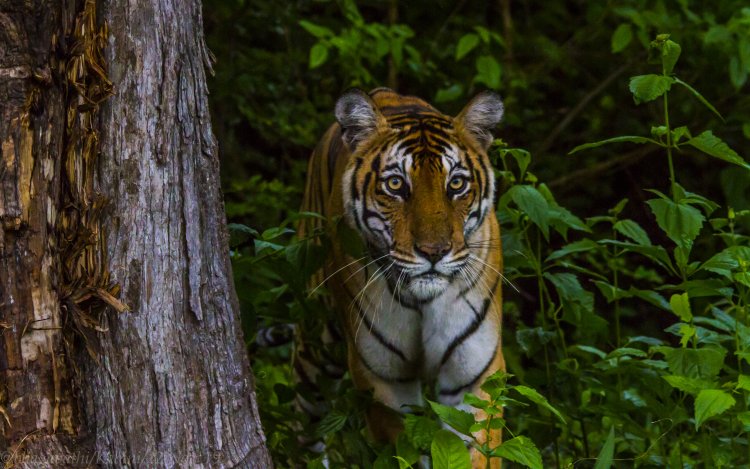
Photo by bhagavathi
The forests of the Nagarahole National Park (Rajiv Gandhi National Park) abound in herds of elephant, sambar and spotted deer, wild boar, sloth bear, asiatic wild dog, gaur and the occasional tiger,leopard and black panther. Nagarahole Tiger Reserve also creates an opportunity for bird enthusiasts with its amazing variety of birds, which frequent this place, as regularly as the enthusiasts.
2. Sundarbans National Park / State - West Bengal
The Sundarbans mangrove forest, one of the largest such forests in the world, lies on the delta of the Ganges, Brahmaputra and Meghna rivers on the Bay of Bengal. Sundarbans World Heritage site !
The site is intersected by a complex network of tidal waterways, mudflats and small islands of salt-tolerant mangrove forests, and presents an excellent example of ongoing ecological processes. The area is known for its wide range of fauna, including 260 bird species, the Bengal tiger and other threatened species such as the estuarine crocodile, golden languar,6 species of Kingfishers,Endangered River Terrapin turtles, Perigrine falcon, mud skippers, Jungle cats, migratory birds, and many more.
Guided Safari - Only by boat
Season - November to May
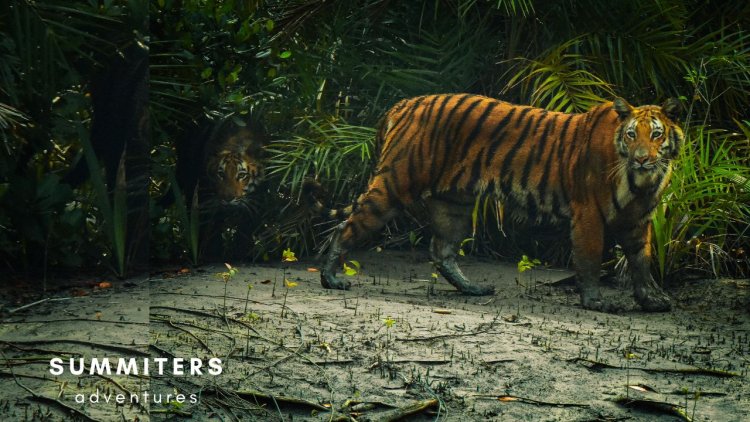
3. Corbett National Park / State - Uttarakhand
The Jim Corbett National Park is a part of the largest Corbett Tiger Reserve; the Project Tiger lies in the Nainital district of Uttarakhand. The Majestic landscape of Corbett is well-known for its tiger richness. Established in the year 1936 as Hailey National Park, Corbett has the glory of being India’s oldest and most prestigious National Park. It is also being honoured as the place where Project Tiger was first launched in the year 1973. This Unique tiger territory is best known as the father who gave birth to Project Tiger in India to safeguard the most endangered species and the Royal wild animal of India called Tigers.
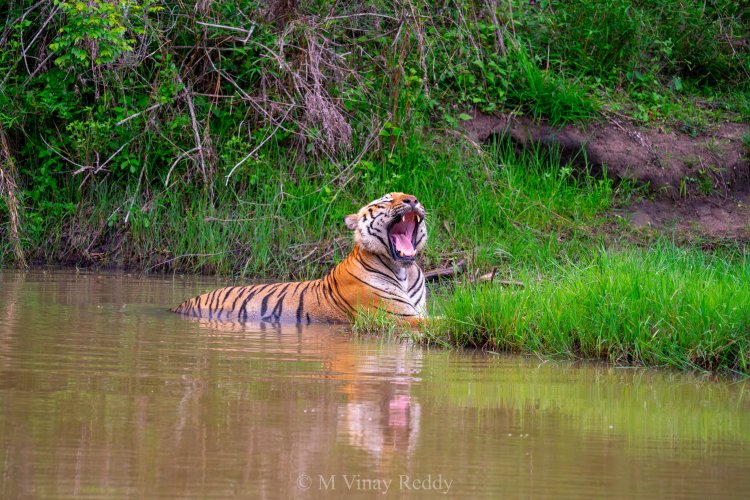
Guided Safari: By Jeep
Season November to May
Recommended zones for Safari
1. Bijrani Safari Zone : A very popular tourist hub because of its bountiful natural beauty and open grasslands. The entry gate of the zone is located at only 1 Km from Ramnagar city.
2.Jhirna Safari Zone : Jhirna is another important tourist zone in the Jim Corbett National park which is open for tourists round the year. Jhirna Gate is located at a distance of 16 km from Ramnagar city.
3.Dhela Safari Zone : Dhela is a new eco-tourism zone in the Corbett National Park which was included in the tiger reserve zone in November 2014. This is the only area in the reserve's buffer zone open for tourists in CTR. The Zone is retaining the attention of a large number of tourists because of its rich biodiversity and is open throughout the year. Also, it is located at an approximate distance of 13 Km from Ramnagar City.
4.Dhikala Zone : Being the largest and the most diversified jungle safari zone in Corbett, Dhikala is famous for its bountiful natural beauty as well as for offering the best sight for its exotic fauna. The Entry gate is 18 km away from Ramnagar city. Night stay inside the Dhikala Tourism Zone is highly recommended for the hardcore wildlife enthusiasts.
5.Durga Devi Zone : Located at the north eastern boundary of the Jim Corbett National Park, Durga Devi zone is the heaven on planet earth for those who are fond of bird watching. The Entry gate is located at an approximate distance of 36 km from Ramnagar city.
6.Sitabani Buffer Zone : Sitabani Zone doesn't fall under the Corbett Tiger Reserve area. But, if you are fond of the serene ambiance of the natural beauty, you must visit the Sitabani area.
4. Bandhavgarh National Park / State - Madhya Pradesh
Located in the heart of India, Bandhavgarh National Park is spread over the Vindhya hills in Madhya Pradesh. The national park consists of a core area of 105 sq km and a buffer area of approximately 400 sq km. The topography of the whole area varies between steep ridges, undulating forest scapes and open grasslands, meadows. Bandhavgarh National Park is known for the Royal Bengal Tigers. The density of the tiger population at Bandhavgarh is the highest known in India as well globally. It is said the national park was the former hunting preserve of the Maharaja of Rewa and at present is a protected famous area for White Tigers.
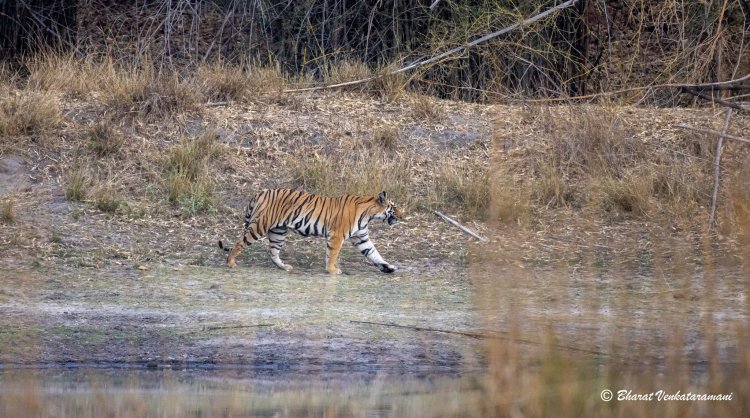
5. Gothangaon National Park / State - Maharastra
Gothangaon is one of the entry gates for Umred-Pauni-Karhandla Wildlife Sanctuary (UPK WLS). UPK WLS has recently come into prominence, a consequence of the increasing tiger population in the park. Another USP of UPK is its proximity to Nagpur – less than 1.5 hours away – making it the closest sanctuary to Nagpur where one can sight tigers.
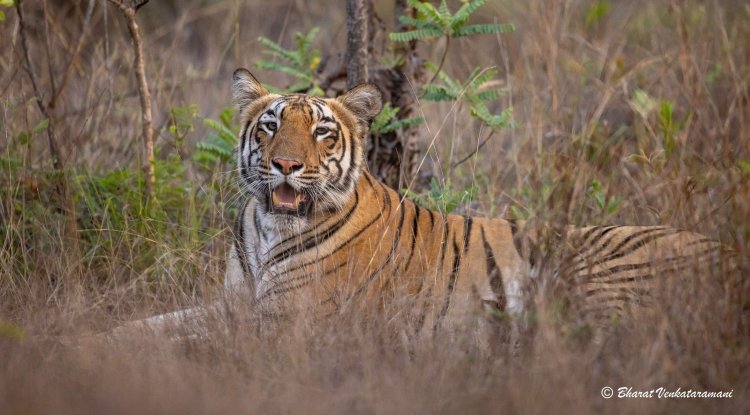
Best place to visit and stay
We stayed at the Gothangaon Conservancy run by The Bamboo Forest, a popular resort on the Kolara Gate at Tadoba. Since the resort lies within the buffer zone of the park it does not have a compound wall and all rooms are built on 15-foot stilts. The facilities are luxury with all amenities provided. Guests need to be always accompanied by a guard when they move from the room to the restaurant/ library area etc. The deck area offers good birding opportunities – we sighted the Indian Paradise Flycatcher, Orange-Headed Thrush, Tawny Bellied Babbler, Purple Sunbird, Indian Scops Owl etc. A night drive around the Conservancy revealed the Savannah Nightjar and Jungle cat.
Arjun, an experienced Naturalist, is the Manager at Gothangaon Conservancy ably assisted by Akhil, the in-house Naturalist.
Safari ranges and details safari points
The resort is only a couple of minutes drive from the Gothangaon Entry gate. Being a small park only a few gypsies are allowed from each gate. Fairy is a famous tigress of UPK. We didn’t sight her. But her daughter, christened F2, gave us some wonderful sightings including a 15-20 minutes “road show”. During our 4 safaris, we sighted her on 3. Besides tigers we also had good sightings of dholes, spotted deer, sambhars and wild boars.
However, a note of caution – sightings in Gothangaon are best during summers. For information and help in organising a safari one can get in touch with Himanshu Bagde, who runs Aranya Outbound, based out of Nagpur.
Naturalists to guide you
Our best safari experience was with guides Amol and Shiv Gedekar and driver Prajwal.
How to reach
Nagpur, the Tiger Capital of India, is the best base for a trip to a range of Tiger Reserves including Tadoba, Pench, Tippeshwar, Umred-Karhandla and if one is willing to stretch the journey a bit even to Kanha and Satpura. Nagpur is well connected by air, railways and by road to all parts of India.
6. Panna National Park / State - Madhya Pradesh
Another of Madhya Pradesh’s Tiger Reserves has made a remarkable recovery from a dire situation in 2009 when the tiger population in the park was wiped out due to rampant poaching. However, since then the Forest Department has been successful in re-introducing the striped cat to the park and the current population is in excess of 70. This is also evidenced by the increase in tiger sightings. These days there are organised wildlife photography tours to Panna.
The park topography is varied with the Ken river and gorges that offer wonderful views

Best place to visit and stay
One of the best places to stay for Panna Tiger Reserve is Taj Pashangarh. The resort is itself situated within a forested area and is abutting the buffer zone. And if you are lucky you may sight some interesting game even within the resort. There have been leopard and even tiger sightings within the resort. We got a room with view onto a small waterhole that was regularly visited by spotted deer, peafowl and wild boar. And we were under strict instructions not to venture out on our own.
For all our safaris we had the company of Harsh, the Head Naturalist at Pashangarh. This meant some very rewarding sessions. Whilst we saw the tiger (T141’s sub-adult cubs) on 1 safari next to the Ken river, we had far greater success with leopard sightings – sighting 3 of them. The most memorable one was that of a large, male leopard whom we followed for more than 45 minute to a tree where he partook of a langur kill, stolen from another female leopardess!!!
The best sighting, however, happened close to our resort itself – a tigress relaxing at a forest department water-saucer to beat the heat and seeking some “me-time” away from her young cubs.
Panna is also excellent for birding – particularly during the winters. During summer, we still got good sightings of Indian Vultures in the Dhundhwa Seha gorge area of the park and the Sirkeer Malkoha and the Indian Cuckoo.
Safari ranges and points
We had 4 safaris – 3 from the Hinota Gate and 1 from the Madla gate.
How to reach
Nearest airport is Khajuraho which is just over an hour’s drive from Panna. The nearest railhead is Jhansi which is 3.5 hours drive from Panna and well connected to most major cities in India.
7. Bandipur National Park / State - Karnataka
Bandipura National Park is regarded as one of the most beautiful and better-managed national parks of India. Located amidst the picturesque surroundings of the towering Western Ghats on the Mysore-Ooty highway in Karnataka, it is an important part of the Nilgiri Biosphere Reserve that constitutes Karnataka’s Rajiv Gandhi National Park (Nagarahole) to its Northwest, Tamil Nadu’s Mudumalai Wildlife Sanctuary to its South, and Kerala’s Wayanad Wildlife Sanctuary to its Southwest. The total extent of Bandipur National Park is 872.24 sq km. It is located partly in Gundlupet taluk of Chamarajanagara District and partly in H.D.Kote and Nanjangud taluks of old Mysuru District.
Once a private hunting grounds of the erstwhile Wodeyars of Mysore, and nestled at the foothills of the Nilgiris, Bandipur has had a long tryst with tigers. One of the thirty reserves identified across the country to save the tiger dwindling population and its habitat, it’s also one of the last refuges of the endangered Asiatic wild elephant.
Apart from the two famed residents, a number of other endangered species such as sloth bears, gaurs, dholes, Indian rock pythons, jackals, muggers, and four-horned antelopes can be spotted in this national park. Bandipur also shelters sambar, mouse deer, chital, sloth bear, and the rare flying lizard.
Over 200 species of birds and a diversity of flora add to its attraction. Bandipur also supports a wide range of timber trees including teak, rosewood, sandalwood, Indian-laurel, Indian Kino tree, giant clumping bamboo, etc.
Note -
Movement of vehicles from 9 pm to 6 am is restricted on the road which passes through the National park is a laudable decision of state goverment.
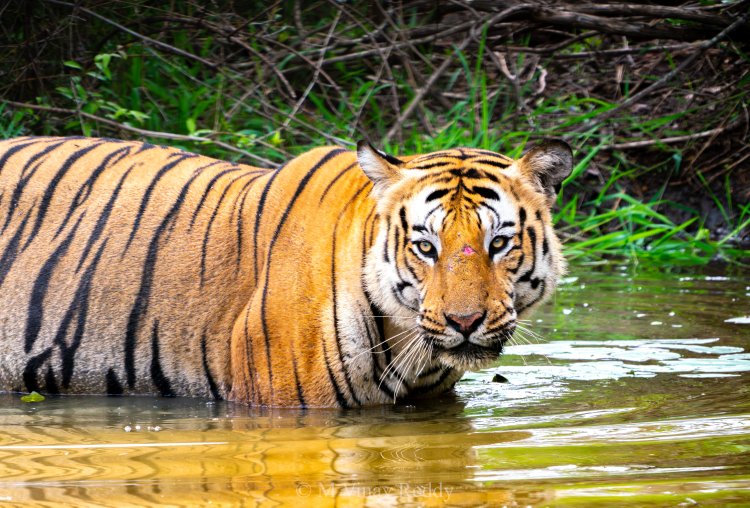
8. Tadoba National Park / State - Maharastra
Tadoba, renowned as Maharashtra's oldest and largest National Park, popularly known as "Tadoba National Park", also known as the "Tadoba Andhari Tiger Reserve" is one of India's 47 project tiger reserves existing in India. It lies in the Chandrapur district of Maharashtra state and is approximately 150 km from Nagpur city. The total area of the tiger reserve is 1,727 Sq.km, which includes the Tadoba National Park, created in the year 1955. The Andhari Wildlife Sanctuary was formed in the year 1986 and was amalgamated with the park in 1995 to establish the present Tadoba Andheri Tiger Reserve. The word 'Tadoba' is derived from the name of God "Tadoba" or "Taru," which is praised by local tribal people of this region and "Andhari" is derived from the name of Andhari river that flows in this area
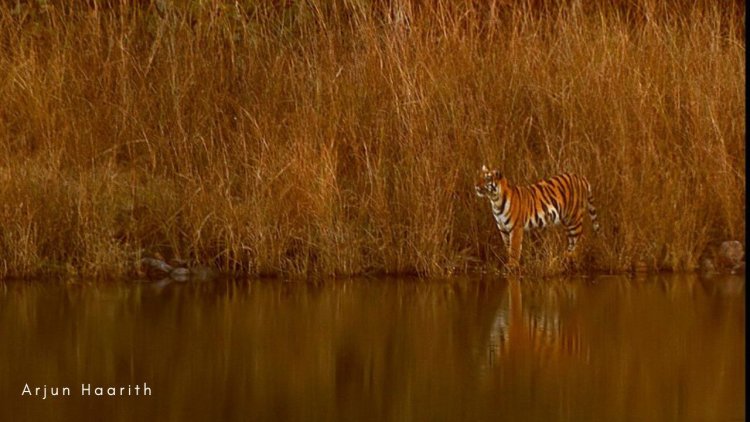
According to the 2010 National Census on Tigers, there are about 43 tigers in the reserve, which is one of the highest in India. Here are some highlights of the park…
- The park is open for visitors from mid October to June every season and remains full-day closed on every Tuesday.
- The vegetation of Tadoba forest is of Southern tropical dry deciduous type and is spread on around 626 sq.km.
- Teak is the prominent tree species in the forest and there are a few lakes, which makes sure the park has rich water resources.
- Major part of this forest lies in the hilly area, thus many hillocks and terrains provide shelter to the wild animals here.
- It has a dense forest area, smooth meadows, deep valleys, and a great atmosphere to stabilize more numbers of tigers.
- The main attraction of the Tadoba National Park is Jungle or Tiger Safari in an open top gypsy.
- There is good chance to spot the shy Sloth Bear and Wild Dogs.
- One can find some of the Central India’s best native woodland bird species in this forest.
- Accommodation facilities are available and are mainly concentrated among two of its popular entrance gates i.e. Kolara Gate and Mohurli Gate.
The Tadoba National Park is divided into three separate forest ranges, namely
1. Tadoba north range, 2. Kolsa south range, and 3. Morhurli range, which is sandwiched in between the first two. There are two lakes and one river in the park, which gets filled every monsoon, the ‘Tadoba Lake,’ ‘Kolsa Lake,’ and ‘Tadoba River.’ These lakes and rivers provide vital ingredients needed to sustain the park’s life.
The Tadoba Tiger Reserve is rich in flora and fauna. Some of the famous and wildly seen flora of this park includes, Teak, Ain, Bija, Dhauda, Hald, Salai, Semal, Tendu, Beheda, Hirda, Karaya gum, Mahua Madhuca, Arjun, Bamboo, Bheria, Black Plum, and many others.
Apart from this the list of animals noted in this part include, Tigers, Indian leopards, Sloth bears, Gaur, Nilgai, Dhole, Striped Hyena, Small Indian Civet, Jungle Cats, Sambar, Spotted Deer, Barking Deer, Chital, Marsh Crocodile, Indian Python, Indian Cobra, Grey-headed Fish Eagle, Crested Serpent Eagle, Peacock, Jewel Beetles, Wolf Spiders, etc.
9. Ranathambore National Park / State - Rajasthan
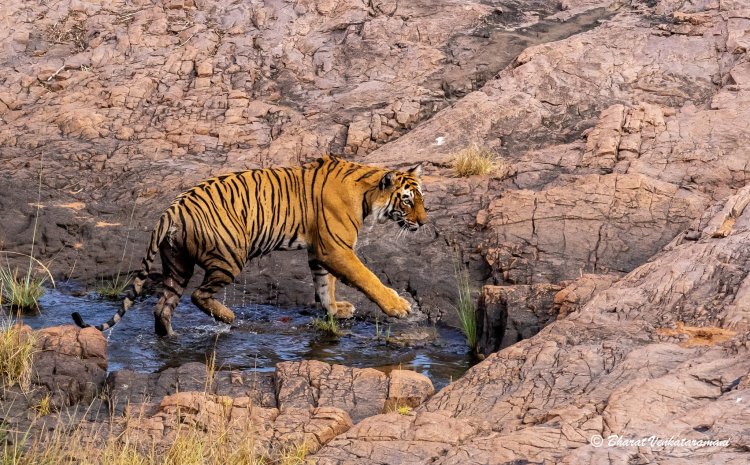
10 Safari Zones of Ranthambore of National Park
Starting with Zones 1 through 10 make up Ranthambore National Park's 10 safari zones. The park originally only had 5 Zones, but as it gained popularity, the additional 5 Zones were added. Zones 1 through 5 is said to be the greatest for seeing tigers, although Zones 6 through 10 also provide plenty of opportunities. The most significant of them is Zone 2, which is littered with several watering holes and where a variety of wildlife, including leopards, can frequently be seen. The Red Headed Vulture, an endangered bird, can be seen in Zone 6 Kundal, which is distinct from the other zones in terms of both its scenery and the prospects for bird watching.
- Zone 1: the zone's entrance via Singh Dwar. T39 and T-57 are located in this zone, which is more of a buffer zone. Due to Noor T 39, and her three cubs' return, as well as the numerous sightings that were recorded till 2017, this area has gained a lot of popularity. The following locations in this area also offer a chance to see a large cat: Tuti ka Nalla, Amreshwar Dang, Sultanpur, Peela Pani, and Gada Dub.
- Zone 2: The most sightings are reported from this zone, which is one of the most significant zones. Its presence of watering holes and cats in zones T19, T22, T72, T57, T28, T60, and T 39, There have been sightings at the following significant locations: Jogi Mahal Phuta Kot, Phuta Bandha, Lahpur Tiraha, and Nal Ghati. This area has also been the site of numerous leopard sightings.
- Zone 3: High Point, Raj Bagh, Mandook, Jogi Mahal and Padam Talab are the main locations where sightings have been reported. One vantage point where you may expect to watch some big cat action from T 19 and T-28 in this zone is Padam Talab
- Zone 4: This zone is full of hiding places for frightened cats, and Machli, the most well-known tigress in Ranthambore, formerly called it home. The following cats can be spotted in this area after this one: T-28, T-64, T10, T-75, T 41,and T-25. There have been sightings at the following significant locations: Singh Dwar, Malik Talab Lakkad Da, Adidaant, Lambi, Tamakhan, and berda.
- Zone 5: There are a few regular sites for sightings at the entry to this zone, which is identical to zone 4. Singhdwar, Anatpur, Jokha, Dhakda, Kachida, Baghda, and Bakola are the points. The following big cats have been seen in this area: T-25, T-28, T-17, T-74, and T-75. Zones 6 through 10 were eventually added to the sanctuary, and entry to them is located at the exact opposite end from zones 1 through 5. Gypsies and canters pass through the old city to get to these areas.
-
Zone 6 (Kundal): shares boundaries with zone 1, and there is a good likelihood that T 39 Noor and her pups will be seen here as well. This zone's landscape is very different from zones 1 through 5, with more open meadows and massive mountains as a backdrop. You get the chance to see both birds and the Indian Gazelle. (Along with the threatened Red-headed Vultures).
There have been tiger sightings in this area in the following locations: Kala Pani, Saran Ka Pattha, KhaliKi Baori, Khabli, and Soleshwar.T-34, T 39, T-57, and T-8 are the other Tigers visible in this picture. Livestock does wander in this area because it is adjacent to a settlement, and Kumbha (T-34) has reportedly killed and eaten cattle in the past.
- Zone 7: In comparison to the fewer zones, this one has fewer points, however big cats have been seen in Chidikho, Jamoda, Kushalipura, and Rajbagh Naka. In this area, T-8 and T-34 have been seen.
- Zone 8: The tigers seen here are identical to those in zone 7. (T-8 and T-34). They were seen in the following locations: Balas, Kherai, Kali, Neemli Dang, Bhat, and Mahakho.
-
Zone 9: This zone is situated on the banks of the Chakal River and is around 45 minutes away from the Tiger Reserve. T-42 (Fateh), an aggressive male who is known to chase the vehicles of the forest service and has also been seen on trap cams murdering a sloth bear, resides here. In addition to T-42, T-59 is also visible. Aquatic birds, sloth bears, and caracals live in this area as well.
-
Zone 10: Along with birds, tigers can be seen in this zone near Aantri, Kushalipura, Bodal, Halonda, and Banskhori. Tigers T-13, T-42, and T-43 have been observed in this area.
Both jeeps and canters are available for safaris, offering different but equally thrilling experiences of Ranthambore’s wildlife and natural beauty. Remember, each safari in Ranthambore is unique, and sightings can never be guaranteed, but the adventure and the beauty of the forest are always gauranteed
Please note that starting from July 1st, 2023 the tiger reserve in Rajasthan will be closed every Wednesday.
10. Jamantara National Park / State - Maharastra
Will share information soon....
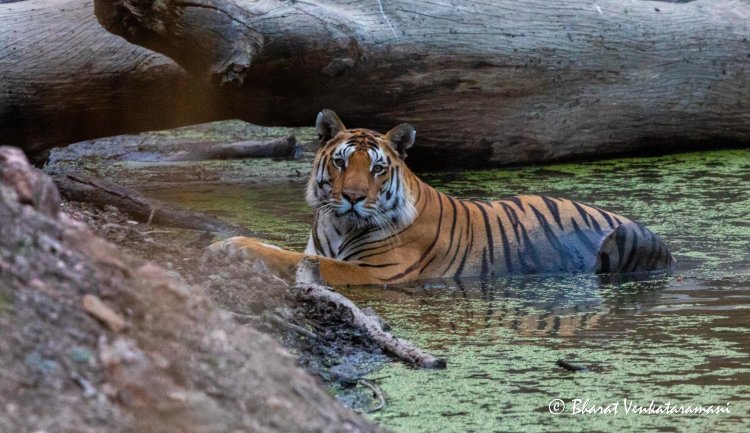
11. Pench National Park / State - Maharastra
Another Tiger Reserve close to Nagpur and incredibly popular among wild life enthusiasts, Pench straddles 2 states – Maharashtra and Madhya Pradesh. The Sillari and Khursapar Gates fall within Maharashtra whilst the others eg Turia, Jamtara, Karmajhiri, Rukkad etc fall in Madhya Pradesh.
Typically, in parks that have a large tiger population it is extremely difficult to spot leopards. Pench is one of the exceptions where there are good sightings of both these big cats.
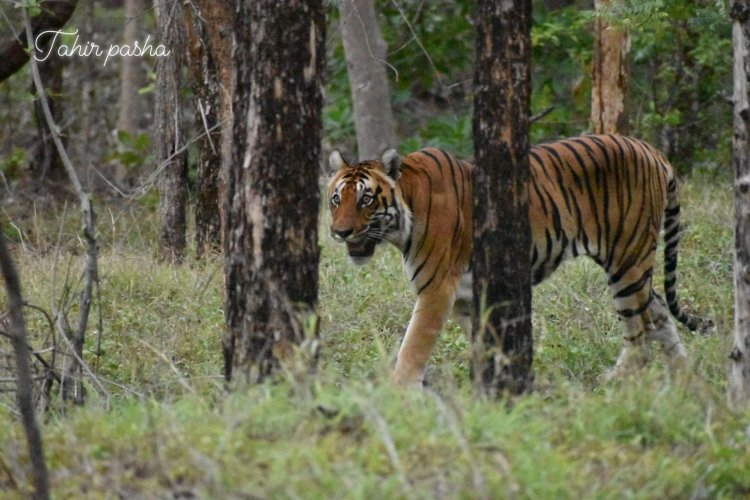
Best place to visit and stay
Like Tadoba, proximity to a large city (Nagpur) means that Pench is high of the list for weekend trips for many. Hence choices of places to stay are aplenty. We stayed at Saj in the Forest – a newly opened resort.
Very well anointed rooms and spread over a large area Saj was an excellent experience with very helpful and courteous staff. The resort has all modern amenities and boasts of a swimming pool too. The food served at the restaurant is a mix of local, Indian and continental fare.
Safari ranges and points
We had 3 safaris from the Turia gate and 2 from Khursapar gate. Turai gate sessions were exciting. Early morning entry and every few kilometers there were alarm calls ringing out through the forest. We followed one of them and sighted Tigress Lakshmi. At the same time we could hear alarm calls from nearby which turned out to be for a leopard. The next morning’s session at Turia we quickly ran into a leopard sitting amongst the rocks and another one within 10 minutes drive of each other. On the final safari at Turia, we had to wait beyond breakfast time to have an up-close sighting of the Kalapahar Female as she crossed the road following a herd of Chital.
However, the Khursapar sessions turned out to be luck-less with very little activity on the 2 safaris. Just highlights the uncertainty of sightings in the large parks.
Naturalists to escort info
For all the Turai gate sessions we had Amit as the driver – an experienced hand. Guides were on a roster basis and we had Nehal, Praveen and Sharmila as the guides. For the Khursapar sessions young Suren was our driver and Digambar and Pahandi the guides.
How to reach
Nagpur is the best base for trips planned to Pench and is about 2 hours away. Nagpur is well connected to all cities in India.
12. Kanha National Park / State - Madhya Pradesh
Created in 1971 as part of Project Tiger Kanha Tiger Reserve is one of India’s premier tiger reserves. The special feature of Kanha is its Sal forests, vast grasslands interspersed with low hills providing an amazing variety for viewing wildlife
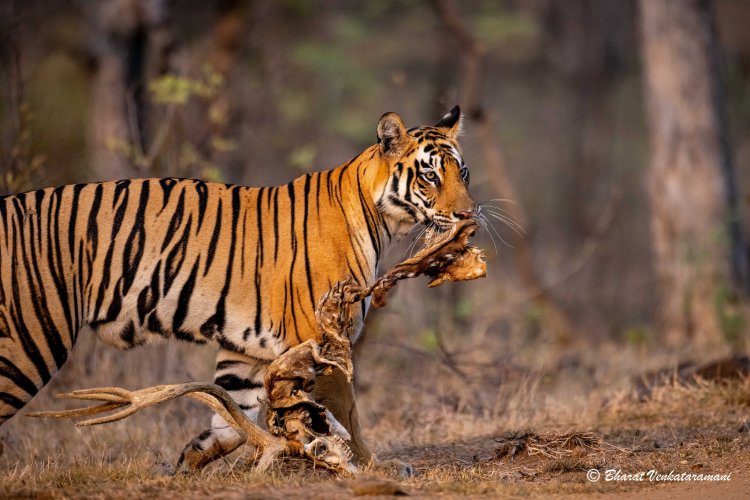
Best place to visit and stay
Kanha has 2 main gates for access – Khatia and Mukki. For all our multiple visits to Kanha we have stayed near the Mukki gate – arguably a better one for tiger sightings. There are plenty of options for stay at Mukki to suit all budgets.
For all our trips we prefer staying at Kanha Jungle Lodge (KJL), which is a 5-minute drive from the Mukki Entry Gate. KJL offers an idyllic and quiet getaway with its comfortable rooms. Run by Tarun and Dimple, every care is taken to ensure that guests have an excellent stay and experience at KJL. The set menu curated by Dimple are particularly noteworthy. It truly feels like a home away from home!!!
The most popular entry gates for Kanha are Khatia, Mukki and Sarhi. Khatia and Mukki are the most popular.
Kanha is a large park and would therefore require multiple visits from different gates. Due to this, if one enters from the Mukki gate for a Kanha/ Kisli zone safari it is a long drive. This could mean that the actual time spent at the designated zone could be 2 hours lesser than the total safari time. This also means that you will need to be more lucky to have a sighting. Consequently, whilst our sighting luck has been good in Mukki zone. We haven’t been lucky to sight a tiger in Kanha/ Kisli zone yet.
The “Queen of Mukki zone” is certainly T27 or the Dhawajhandi (aka DJ) tigress. In all our 4 visits to the park, DJ has always given a darshan (even when in inclement weather conditions). On our most recent trip in 2024, we also sighted her sub-adult daughter, who seems to be following in her mother’s footsteps – bold and fearless.
Another main attraction of Kanha is the endemic Barasingha. Often seen in the large water bodies of Mukki zone, these large deer are a treat to watch. Kanha also hosts a good population of sloth bears. Leopards are a rare sight – we haven’t seen one yet in Kanha.
Naturalists to escort info
Being such a busy and popular park, there is a large team of guides who work on a roster basis. Since we had booked our safaris through KJL, we have always been accompanied by the in-house Naturalist from the resort – Vinod Ayam. A local lad from Baihar area and a son of a mahout, Vinod enthrals all his guests with his jungle stories, knowledge of every aspect of the jungle – vegetation, insects, butterflies, birds and mammals.
How to reach
Kanha is centrally located and has multiple access. Nearest airport is Jabalapur which is approx. a 4 hour drive away. However, you could reach Kanha via Nagpur too – a 5.5 hour drive. Other options include Raipur airport (4 hours drive) and from Gondia Railway Station (3 hours away) from Mukki gate.
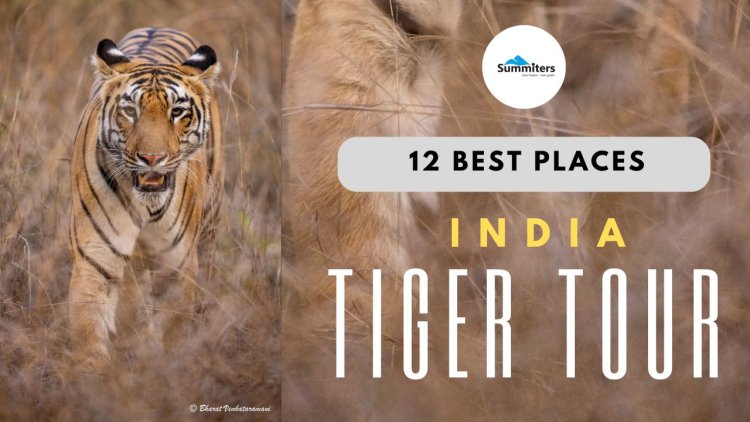
By now you might have got a insight about tiger Safari destination and realistic figures. You might be left with more queries unanswered.
Hope we got it right ?
1. What is the best time to go for a tiger safari ?
To increase your chances of a sighting it’s best to visit in the hot and dry summer months (January to May, November should also be good). When the sources of water become limited the tigers will be spotted at the available remaining water holes and river beds to quench theri thrist, which makes them easier to spot
2. What kind of vehicle is best for a tiger safari ?
Normally for Safaris you can choose between canters and gypsies. Canters are buses, that hold up to 20 passengers, whereas gypsies only carry a maximum of 6 guests.
3. How high are the chances to spot a tiger?
It’s important to know that tigers live in quite large territories, which means they roam vast grounds and are not easy to spot. A female tiger’s territory can be up to 20 square kilometres large, a male tiger’s even up to 100 square kilometres. Knowing these facts help to manage expectations when it comes to tiger safaris.
4. Is there a spotting guarantee on a tiger safari?
No, there is no spotting guarantee and you can go for hours without seeing even a trace of a tiger in the national parks. The guides will do their best, but in the end it’s nature. It’s recommended to increase your chances by staying at least 3 nights and book at least 4 - 6 game drives – the more the interesting !
5. What other wildlife can i get to see other than big cats ?
If you decide to visit any of the National Parks! And even if you don’t spot a tiger, the scenery of the national park is quite intriguing and there’s many other animals to see. Based on habitat the parks has leopards,Panthers, Crocodiles, Jungle cats, migratory birds,owls, hyenas, bears, civet cats,elephants, sambar deer, Chital, Nilgai, turtles, langurs and much more!
7. What to carry and what not during Wildlife Safari ?
Camera and Lenses as per need
No flashes, please !
Dont carry mobile to do insta reels,videos and play music.Strictly prohibited !
Dont carry Snacks and eatables, polythene covers.Try to feed animals.
8.What attire recommended during wildlife tour and other tips ?
Wear green or brown clothing, strictly avoid bright clothing.
Dont apply deodrants, Scents









